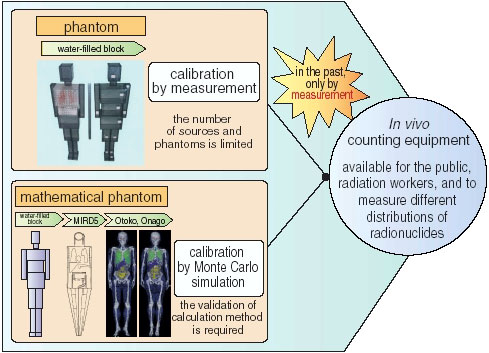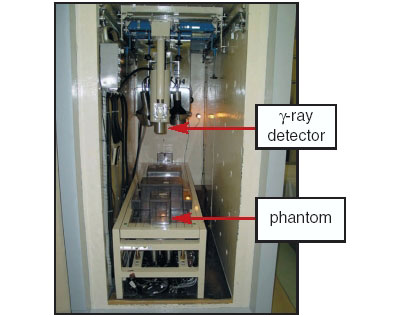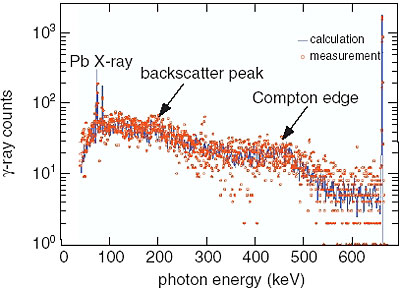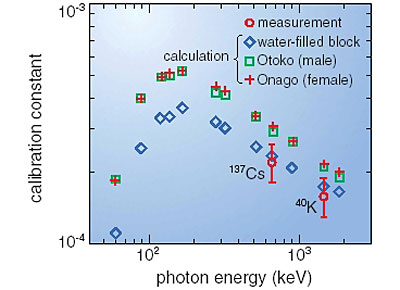To estimate an internal dose, individual monitoring for intakes of internally incorporated radionuclides is essential. For individual monitoring, in vivo counting such as whole-body counting is very useful. in vivo counting equipment should be calibrated with phantoms simulating the human form to measure body burdens. However, it is very difficult to have phantoms that specifically fit different sized individuals and adequately simulate the distribution of radionuclides. For this purpose, a calibration technique for in vivo counting using Monte Carlo simulation was developed, as shown in Fig. 3-13. The calculated and measured response functions of a whole-body counter (Fig. 3-14) for a water filled, block shaped phantom containing 137Cs are shown in Fig. 3-15. The calculation was found to be in good agreement with the measurement. Hence, the calibration technique using Monte Carlo simulation was validated. Furthermore, the voxel phantoms (Otoko and Onago), which were constructed using the CT data of real persons, made it possible to obtain a calibration constant for each individual (Fig. 3-16).
The present calibration technique for in vivo counting without the use of a phantom was found to be effective for both radiation workers and the public.
|



